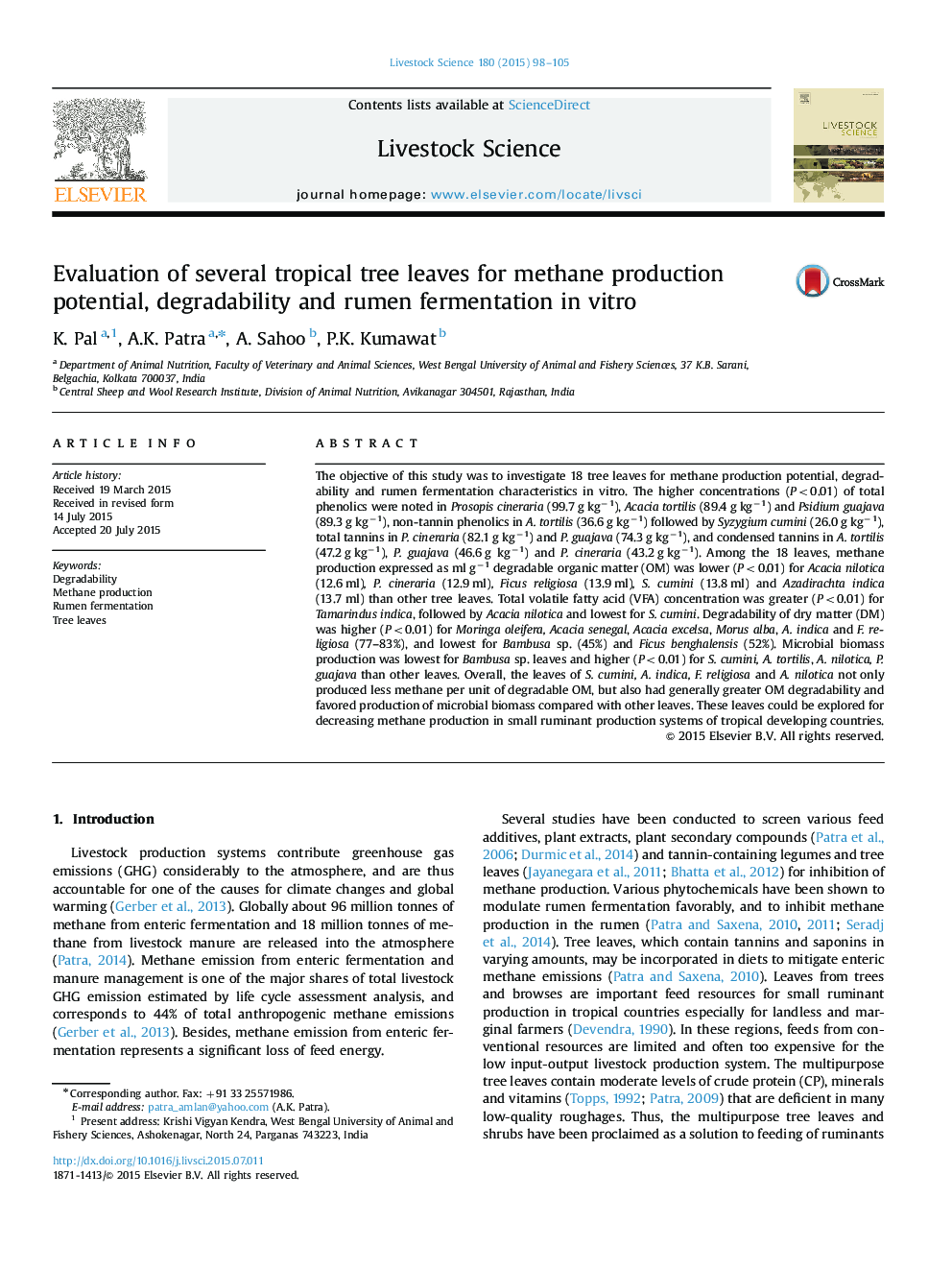| Article ID | Journal | Published Year | Pages | File Type |
|---|---|---|---|---|
| 2447027 | Livestock Science | 2015 | 8 Pages |
•Methane production (MP) potential of 18 tree leaves was investigated in vitro.•S. cumin, A. indica, F. religiosa and A. nilotica lowered MP substantially.•These tree leaves generally had higher dry matter degradability.•These leaves also usually favored microbial biomass production.•These leaves may be explored for MP inhibition in tropical ruminant production.
The objective of this study was to investigate 18 tree leaves for methane production potential, degradability and rumen fermentation characteristics in vitro. The higher concentrations (P<0.01) of total phenolics were noted in Prosopis cineraria (99.7 g kg−1), Acacia tortilis (89.4 g kg−1) and Psidium guajava (89.3 g kg−1), non-tannin phenolics in A. tortilis (36.6 g kg−1) followed by Syzygium cumini (26.0 g kg−1), total tannins in P. cineraria (82.1 g kg−1) and P. guajava (74.3 g kg−1), and condensed tannins in A. tortilis (47.2 g kg−1), P. guajava (46.6 g kg−1) and P. cineraria (43.2 g kg−1). Among the 18 leaves, methane production expressed as ml g−1 degradable organic matter (OM) was lower (P<0.01) for Acacia nilotica (12.6 ml), P. cineraria (12.9 ml), Ficus religiosa (13.9 ml), S. cumini (13.8 ml) and Azadirachta indica (13.7 ml) than other tree leaves. Total volatile fatty acid (VFA) concentration was greater (P<0.01) for Tamarindus indica, followed by Acacia nilotica and lowest for S. cumini. Degradability of dry matter (DM) was higher (P<0.01) for Moringa oleifera, Acacia senegal, Acacia excelsa, Morus alba, A. indica and F. religiosa (77–83%), and lowest for Bambusa sp. (45%) and Ficus benghalensis (52%). Microbial biomass production was lowest for Bambusa sp. leaves and higher (P<0.01) for S. cumini, A. tortilis, A. nilotica, P. guajava than other leaves. Overall, the leaves of S. cumini, A. indica, F. religiosa and A. nilotica not only produced less methane per unit of degradable OM, but also had generally greater OM degradability and favored production of microbial biomass compared with other leaves. These leaves could be explored for decreasing methane production in small ruminant production systems of tropical developing countries.
